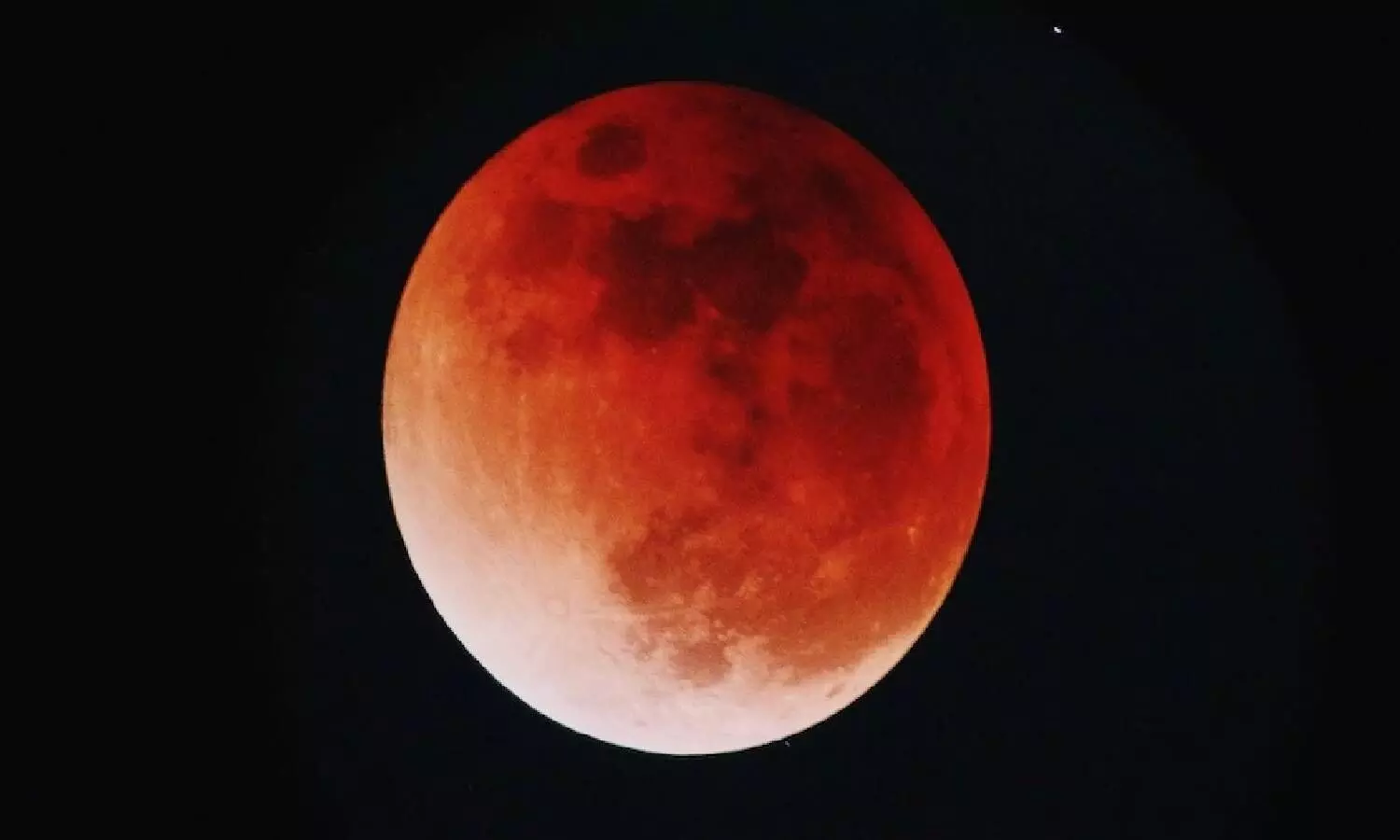Get set for longest Lunar Eclipse of century on Nov 19
Come November 19 (Kartik Purnima), astronomers and amatuer skygazers will get to watch the longest lunar eclipse of the century. In about two weeks, Earth will pass between the Sun and Moon, creating a shadow on the Moon’s surface
image for illustrative purpose

Hyderabad Come November 19 (Kartik Purnima), astronomers and amatuer skygazers will get to watch the longest lunar eclipse of the century. In about two weeks, Earth will pass between the Sun and Moon, creating a shadow on the Moon's surface. The near-total lunar eclipse will be at its peak just after 1:30pm, then the most of the Earth will cover most of the moon from getting the Sun's rays. During this celestial event, the moon will turn reddish. It will be visible in some parts of India, particularly the northeastern parts.
Lunar eclipses are visible only in places where the Moon is above the horizon. People in North America will be best placed to watch the spectacle completely. All the 50 US States and Mexico will be able to see it. It will also be visible in Australia, East Asia, Northern Europe, and the Pacific Ocean areas.
The lunar eclipse will last for 3 hours, 28 minutes, and 23 seconds, which would be longer than any other eclipse in 100 years between 2001 and 2100, Nasa said. Earth will witness a total of 228 lunar eclipses in the 21st century. Mostly, there will be two lunar eclipses in a month, but there can also be three eclipses.
A peek into how lunar eclipse occurs: Normally, the Moon's face is illuminated by sunlight reflecting off its surface. But during a lunar eclipse, the Moon, Sun, and Earth are in a straight line. The Earth blocks the sunlight and thus, the moon appears eaten from Earth. During a total lunar eclipse, 100 per cent of the Moon is covered by the Earth's cone-shaped shadow, known as the umbra.

